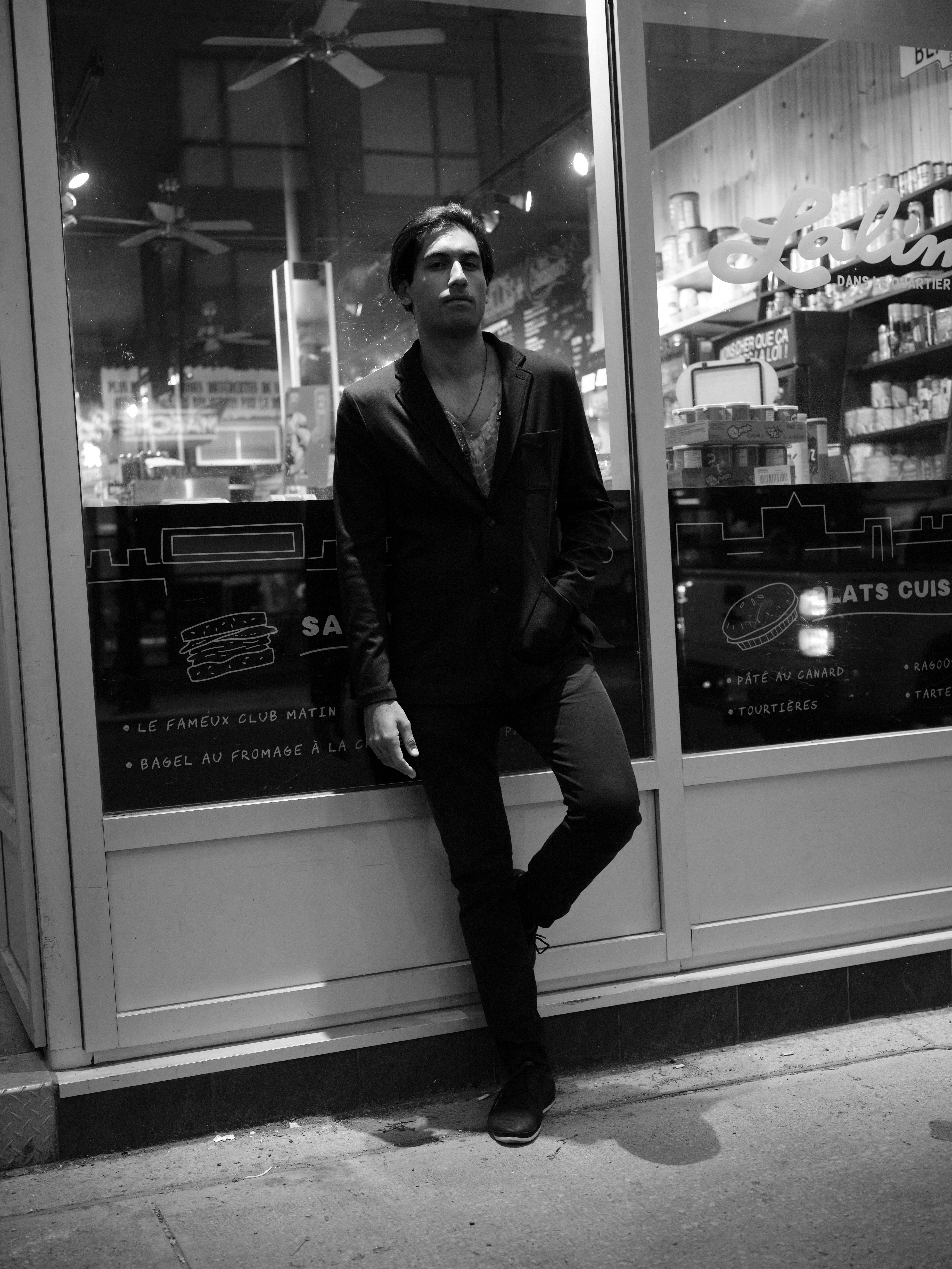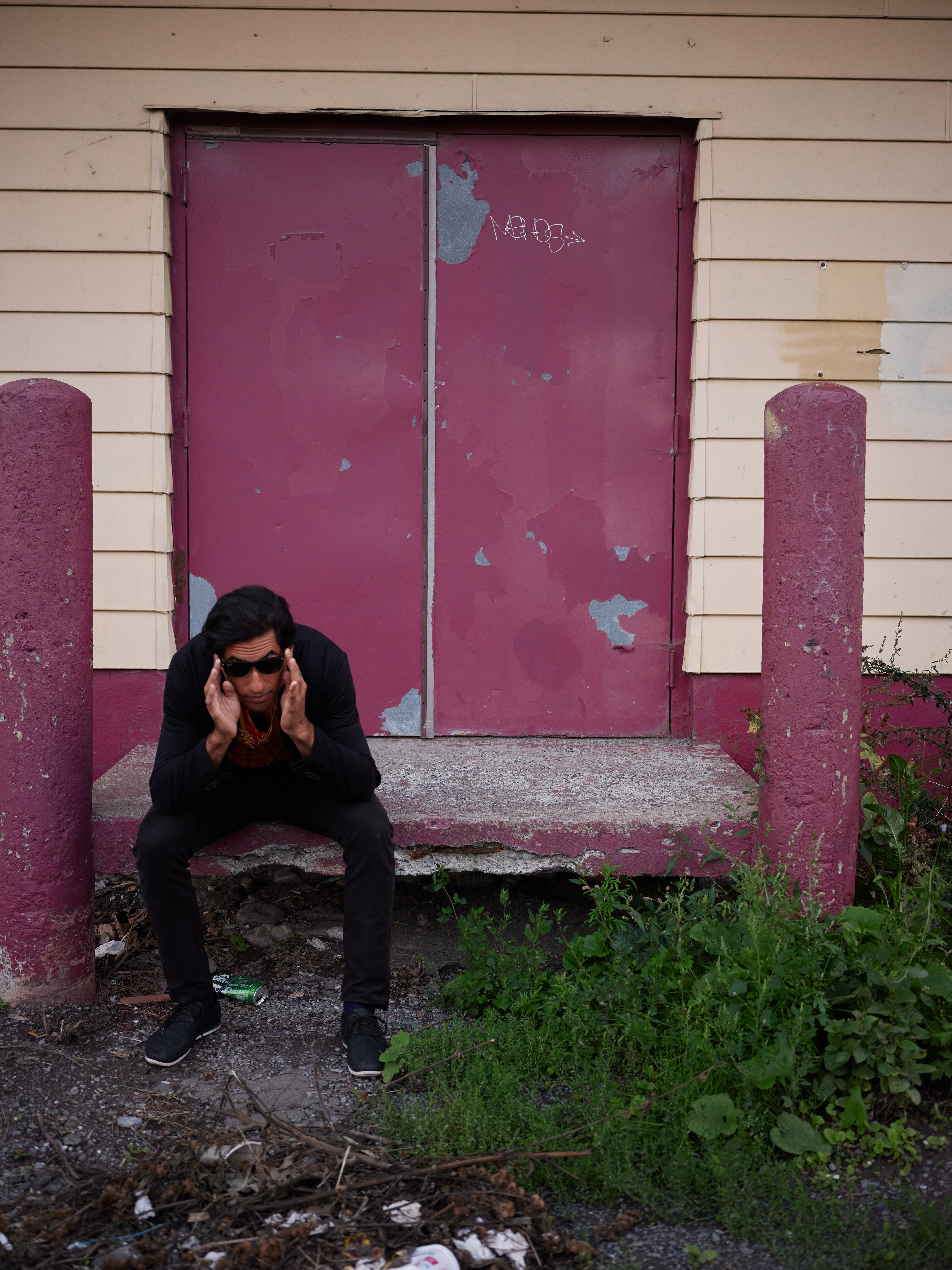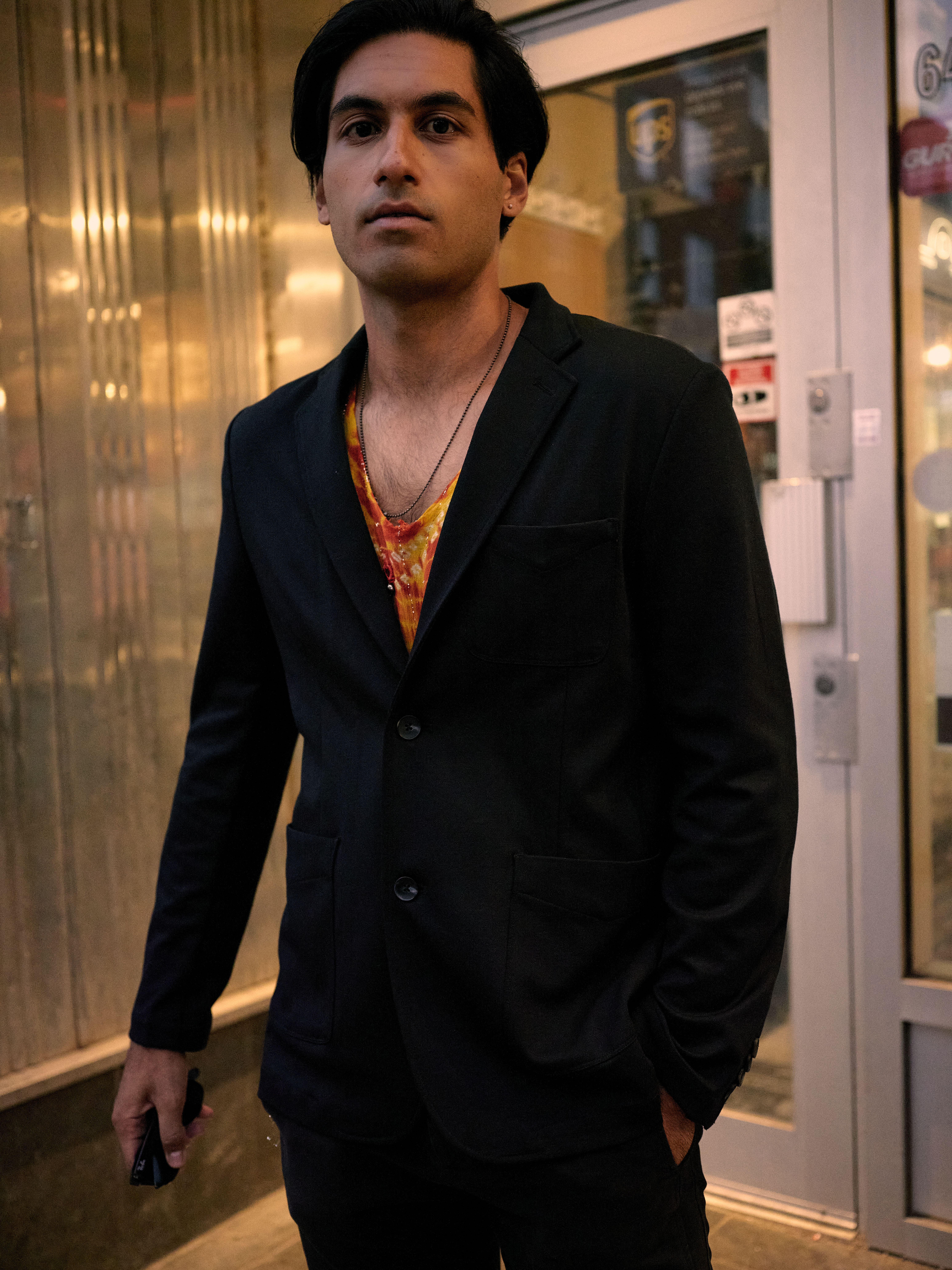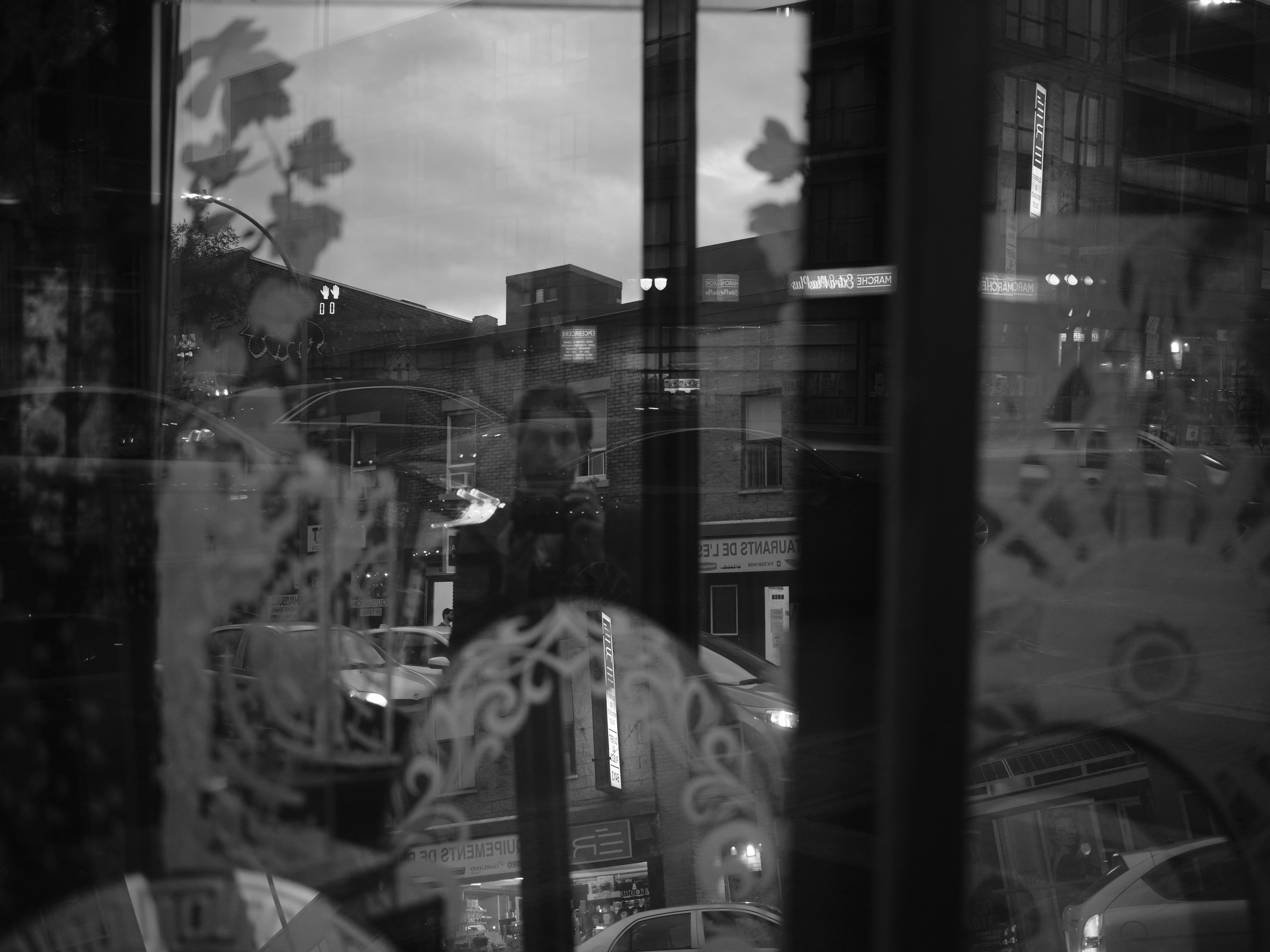Love, Grit & Rock 'N’ Roll
Keeping the Dream Alive with Susil Sharma
Written by Yang Shi
Photos by Yang Shi
March 31st, 2021
Photos by Yang Shi
March 31st, 2021
Susil Sharma is a fish curry master.
The whole room was overflowing with the mouth-watering and potent fragrant of salmon curry. Sharma, poised and calm, was preparing two bowls and inquired about my day. As per tradition, we exchanged about the movies and the TV shows we were watching, the music we were listening to and the plans we were making—or attempting to make. On that evening, I found Sharma particularly serene, he told me that he’s been taking care of himself and meditating a lot, tuning both inward and outward. These days, the 32 years-old Nepalese singer-songwriter has been spending most of his time in his room, revisiting some ‘80s classic indie movies from Jarmusch and finicking on his prized Rickenbacker, comparing this artistic exploration as a “second adolescence’’.
![]()
When, Covid first hit, Sharma got laid off and was forced to go back to his parents’ house in Ottawa where he rekindled his love of instant coffee. “I grew up watching my parents only drinking instant coffee. For me, it’s very emblematic of the frugality of immigrants,” he explained. He added that his parents would be outraged if they saw some of his friends buy a 5$ allongé. Besides reconnecting with forgotten pleasures, Sharma also started experimenting with new sounds and reasserting his own style, a craft he’s been fine-tuning since his departure from Montreal-based band Heat a few years ago. A lot of this self-discovery was funnelled into music, which was probably the form it was always meant to have.
The whole room was overflowing with the mouth-watering and potent fragrant of salmon curry. Sharma, poised and calm, was preparing two bowls and inquired about my day. As per tradition, we exchanged about the movies and the TV shows we were watching, the music we were listening to and the plans we were making—or attempting to make. On that evening, I found Sharma particularly serene, he told me that he’s been taking care of himself and meditating a lot, tuning both inward and outward. These days, the 32 years-old Nepalese singer-songwriter has been spending most of his time in his room, revisiting some ‘80s classic indie movies from Jarmusch and finicking on his prized Rickenbacker, comparing this artistic exploration as a “second adolescence’’.

When, Covid first hit, Sharma got laid off and was forced to go back to his parents’ house in Ottawa where he rekindled his love of instant coffee. “I grew up watching my parents only drinking instant coffee. For me, it’s very emblematic of the frugality of immigrants,” he explained. He added that his parents would be outraged if they saw some of his friends buy a 5$ allongé. Besides reconnecting with forgotten pleasures, Sharma also started experimenting with new sounds and reasserting his own style, a craft he’s been fine-tuning since his departure from Montreal-based band Heat a few years ago. A lot of this self-discovery was funnelled into music, which was probably the form it was always meant to have.


It’s in the midst of uncertainty that he decided to turn his existential contemplation into his most perceptive and visceral EP yet, Keep the Dream Alive. Keep the Dream Alive remains unrefined in its whole, with stretches of instrumentals on the brink of dissipating into reverb mayhem, an ode to his childhood heroes Kim Gordon and Thurston Moore. Nevertheless, it strikes its listener in its emotional transparency, sharp songwriting, and Sharma’s ingenuity to toggle between styles (Britpop, trip-hop, ‘90s punk, shoegaze and lo-fi). Its organic delivery seems germane to the new normal, where musicians pour their hearts to create songs that have the power to heal our world. “I made it super quickly, and I wanted to release it. I wanted everything to be really different from the stuff I’ve done in the past beholden to a team, PR and strategizing. I don’t fucking care about this. I really felt this renewed vigour to just release things. And then everything just happened so I just put out the EP as a charity release.’’
![]()
Eschewing the traditional album release, Keep the Dream Alive is the culmination of a long and steady rejection of the formal music industry, a type of freedom he envied when he was with his former band. With the pandemic depriving us of our sense of control and time, Sharma reclaimed his agency through this sonic journey strewn with personal inquiry and second-guessing. An exhilarating feeling of authenticity that he longed for since his early teenth.
![]()
In the opening track “Burning Up”, a straight-up rock anthem, Sharma sings about freedom and escape, the buoyant lyrics spur hope and come from a place that’s very intuitive and fearless. On “Sleeping in the Sun”, a personal favourite, Sharma reveals a collection of avid sounds and a recollection of elusive memories, with a cadence morphing into the soundtrack of an eponymous movie. “A few people have been talking about that song. I had a specific idea in my mind, it has to do with romance and memory.” Sharma is alluding to a breakup he had in 2013 and instead of drawing from that specific event, he writes about the way he reconstructs the narratives, resulting in “an honest vision nonetheless”. In the end, despite the vivacity of his visions, he reconciles with reality. (But I’m wide awake now/free from the shadows/Wide awake now/i’m here when you call). Through the production, Sharma emulates the dream-like sequences with reverse guitar sounds and a hazy atmosphere. The ensemble perfectly captures the dizzying feeling you experience in your 20’s when heartbreaks are more romanticized than the actual relationships. For anyone who has ever found themselves ired in this sort of situation—a mix of disbelief and grief—Sharma’s echoing of it feels like a catharsis.
At its core, Keep the Dream Alive is a call to action and a definitive statement on our generation’s grit. No matter how bleak circumstances may seem, hope is never useless. When asked about his current dream, he answered “to be honest, it’s a bit cliché. I think a few years ago, keeping the dreams alive would be making it as a rockstar, pursuing music. Now I think about just being authentic, Being true to yourself, this constant search that continues to evolve. “In the title track, I view it as me having a conversation with my younger self and encouraging him to be a dreamer and stay true.” Growing up in Fredericton, NB, a predominantly white town, Sharma felt conflicted and alienated by his own identity and admitted wanting to switch his name for Jacob, a wishful thinking that he nowadays jokes about. Like many first-generation and second-generation immigrant kids, the quest for authenticity proved to be a never-ending battle. “For me to be brown, it was not something cool, I did not want to be brown. And this is something that most people don’t understand or haven’t had to deal with. But when I was a kid, I did not acknowledge that I just wanted to make all this go away.’’

Eschewing the traditional album release, Keep the Dream Alive is the culmination of a long and steady rejection of the formal music industry, a type of freedom he envied when he was with his former band. With the pandemic depriving us of our sense of control and time, Sharma reclaimed his agency through this sonic journey strewn with personal inquiry and second-guessing. An exhilarating feeling of authenticity that he longed for since his early teenth.

In the opening track “Burning Up”, a straight-up rock anthem, Sharma sings about freedom and escape, the buoyant lyrics spur hope and come from a place that’s very intuitive and fearless. On “Sleeping in the Sun”, a personal favourite, Sharma reveals a collection of avid sounds and a recollection of elusive memories, with a cadence morphing into the soundtrack of an eponymous movie. “A few people have been talking about that song. I had a specific idea in my mind, it has to do with romance and memory.” Sharma is alluding to a breakup he had in 2013 and instead of drawing from that specific event, he writes about the way he reconstructs the narratives, resulting in “an honest vision nonetheless”. In the end, despite the vivacity of his visions, he reconciles with reality. (But I’m wide awake now/free from the shadows/Wide awake now/i’m here when you call). Through the production, Sharma emulates the dream-like sequences with reverse guitar sounds and a hazy atmosphere. The ensemble perfectly captures the dizzying feeling you experience in your 20’s when heartbreaks are more romanticized than the actual relationships. For anyone who has ever found themselves ired in this sort of situation—a mix of disbelief and grief—Sharma’s echoing of it feels like a catharsis.
At its core, Keep the Dream Alive is a call to action and a definitive statement on our generation’s grit. No matter how bleak circumstances may seem, hope is never useless. When asked about his current dream, he answered “to be honest, it’s a bit cliché. I think a few years ago, keeping the dreams alive would be making it as a rockstar, pursuing music. Now I think about just being authentic, Being true to yourself, this constant search that continues to evolve. “In the title track, I view it as me having a conversation with my younger self and encouraging him to be a dreamer and stay true.” Growing up in Fredericton, NB, a predominantly white town, Sharma felt conflicted and alienated by his own identity and admitted wanting to switch his name for Jacob, a wishful thinking that he nowadays jokes about. Like many first-generation and second-generation immigrant kids, the quest for authenticity proved to be a never-ending battle. “For me to be brown, it was not something cool, I did not want to be brown. And this is something that most people don’t understand or haven’t had to deal with. But when I was a kid, I did not acknowledge that I just wanted to make all this go away.’’


When he was around 14, he felt cursed by this heavy duality between his Nepalese home life and traditional values versus his desire to fit in. By middle school, he knew that in order to survive socially, he needed to distance himself from his ethnicity and everything his parents wanted him to be. Classic rock became a gateway to this coveted mainstream white culture. As an act of defiance and conformity, he started to consume music by Led Zeppelin, Pink Floyd and smoked weed. Then, everything changed when his older sister showed him punk music from legends such as Nirvana and The Clash. In many ways, Sharma described this moment as a pivotal chapter in his life. “I got turned on to punk music. I really started to embrace these bands and their message of inclusiveness, authenticity and being true to yourself. That allowed me to slowly explore my own identity but it took me a really long time to say ‘ Hey this is where I am from, this is my culture, this is me and I can’t turn these things off,’’ he said when asked about his musical influences.
When he moved to Montreal in 2005, he faced the same kind of existential challenges and anxieties. At first, he was excited to escape his upbringing and cultural baggage to blossom in a vibrant city celebrated for its diversity. As he acquainted himself with the indie scene itself, he inevitably came across the soul-crushing reality that there was no escape from the prevailing “white’’ standard. Eventually, he decided to quit school in order to focus on his music career, his bombshell announcement left his parents devastated. There was a long period they didn't really talk at all which poisoned Sharma’s day-to-day life with harrowing guilt. But what really weighed him down was his inability to share the ramification of his decision with his white counterparts knowing they couldn’t really relate to his growing pains. “I think it’s a feeling that’s really hard to communicate to anyone who’s not Asian. Anyone who’s Asian would immediately understand,’’ he confessed after comparing Asian parents to an institution. As an artist of colour, being an outsider can be a creative asset and a cross to bear, you will always be lauded or cast out for your differences.
When he moved to Montreal in 2005, he faced the same kind of existential challenges and anxieties. At first, he was excited to escape his upbringing and cultural baggage to blossom in a vibrant city celebrated for its diversity. As he acquainted himself with the indie scene itself, he inevitably came across the soul-crushing reality that there was no escape from the prevailing “white’’ standard. Eventually, he decided to quit school in order to focus on his music career, his bombshell announcement left his parents devastated. There was a long period they didn't really talk at all which poisoned Sharma’s day-to-day life with harrowing guilt. But what really weighed him down was his inability to share the ramification of his decision with his white counterparts knowing they couldn’t really relate to his growing pains. “I think it’s a feeling that’s really hard to communicate to anyone who’s not Asian. Anyone who’s Asian would immediately understand,’’ he confessed after comparing Asian parents to an institution. As an artist of colour, being an outsider can be a creative asset and a cross to bear, you will always be lauded or cast out for your differences.


I first met Sharma, as the frontman of Heat, in 2016 when his former band opened for Brooklyn-based indie sensation Sunflower Beam. I remember how his inscrutable stage presence combined with his stern sensibility hit me like a prophetic vision. Focused, Sharma charmed the audience with a palpable intimacy, his voice raw and strong, crooning about heartaches and atonement. His performance stung deep. As an aspiring musician of colour myself, I immediately recognized that exceptional art required exceptional courage. It required sacrifices and the painstaking ability to channel and to conquer your demons simultaneously, over and over again. Sharma epitomized the strength of character of someone fighting for their dreams at their most vulnerable and who’s ultimately ready to brace any impact.
When asked about the fate of the indie scene, he concluded visibility of BIPOC in this industry is absolutely paramount for it to evolve and be truly representative. “I have two older sisters, they are six and twelve years older than me. One of them is born in Nepal, one is born in America. They probably even had less representation back in the days. There’s an evolution happening and things are changing quickly in so many ways, I think even just having social media it’s something that allows you to find your community and see the representation.’’ Despite the long road ahead, Sharma is faithful. He points out some of his earlier “brown’’ musical influences born from crossovers between subcultures in the UK that later shaped popular music. “Back in the ‘90s, I remember it was the first time Asian stuff and Indian stuff became mainstream and cool. It wasn’t only about white people playing the sitar like the Beatles, there were cool brown things happening within the community. I remember growing up and thinking that was really inspiring.’’ While sympathizing with his younger self, Sharma is now very grateful to be surrounded with supportive people with whom he can connect on these issues and find a real sense of belonging. He believes that genuine human bonds are forged when we are willing to drop our guards, to own our mistakes and to step out of our comfort zone.
![]()
We met again later in the fall for a casual walk around the Mile-End with cheap black coffee in our hands. At the end of our wander, I asked Sharma if he’s planning to release any new material. He said he was working on a script but he was not able to reveal it to the world yet. With his current band formed right before lockdown, he was recording some live versions of songs from the EP and quickly hinted that another record was on its way. Sharma was in high spirits. I could tell that he was at his best, once again ready to unwind his art-making energy into its most meaningful form.
When asked about the fate of the indie scene, he concluded visibility of BIPOC in this industry is absolutely paramount for it to evolve and be truly representative. “I have two older sisters, they are six and twelve years older than me. One of them is born in Nepal, one is born in America. They probably even had less representation back in the days. There’s an evolution happening and things are changing quickly in so many ways, I think even just having social media it’s something that allows you to find your community and see the representation.’’ Despite the long road ahead, Sharma is faithful. He points out some of his earlier “brown’’ musical influences born from crossovers between subcultures in the UK that later shaped popular music. “Back in the ‘90s, I remember it was the first time Asian stuff and Indian stuff became mainstream and cool. It wasn’t only about white people playing the sitar like the Beatles, there were cool brown things happening within the community. I remember growing up and thinking that was really inspiring.’’ While sympathizing with his younger self, Sharma is now very grateful to be surrounded with supportive people with whom he can connect on these issues and find a real sense of belonging. He believes that genuine human bonds are forged when we are willing to drop our guards, to own our mistakes and to step out of our comfort zone.

We met again later in the fall for a casual walk around the Mile-End with cheap black coffee in our hands. At the end of our wander, I asked Sharma if he’s planning to release any new material. He said he was working on a script but he was not able to reveal it to the world yet. With his current band formed right before lockdown, he was recording some live versions of songs from the EP and quickly hinted that another record was on its way. Sharma was in high spirits. I could tell that he was at his best, once again ready to unwind his art-making energy into its most meaningful form.
ABOUT THE AUTHOR
Yang Shi is a multidisciplinary creative and lifestyle editor at Sticky Rice Magazine. Born in China and raised in Montreal, she loves food, rock ’n’ roll, and a good meme.
Yang Shi is a multidisciplinary creative and lifestyle editor at Sticky Rice Magazine. Born in China and raised in Montreal, she loves food, rock ’n’ roll, and a good meme.








